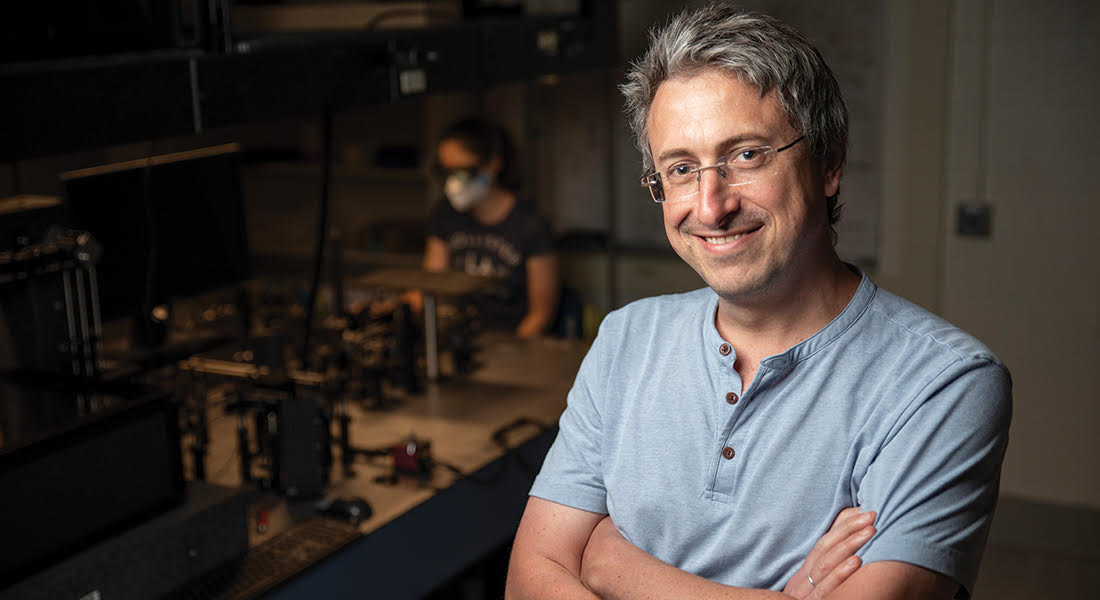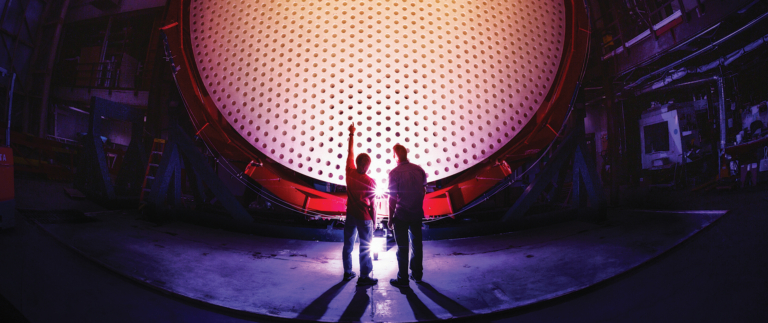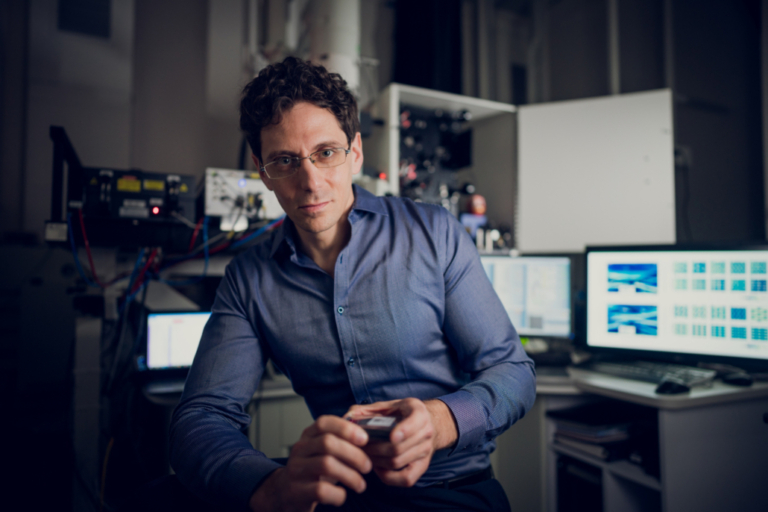In recent years, scientists have dramatically improved their ability to trap and manipulate light, particularly through the use of “photonic crystals” — microfabricated structures in which light propagates in a similar manner to how electrons move in solid-state materials such as silicon. However, since these and other photonic devices have to be manufactured using methods that are still imperfect, defects always threaten to hinder performance.
When light passes through glass, it essentially runs into a series of blockades, causing the light to scatter randomly. As far back as 1980, physicists knew that when electrons are confined to a two-dimensional plane and then immersed in a strong magnetic field, they propagate in a manner that is completely insensitive to defects and disorder. When Rechtsman was a postdoc in Moti Segev’s internationally renowned lab at Technion between 2010 and 2014 (as an Azrieli Fellow for the first two years), he and his colleagues demonstrated that the ability to be impervious to defects wasn’t just limited to electrons but could also be applied to light. This new knowledge provided a route to making photonic devices that were both more robust and far cheaper than was previously possible.
The foundational experiment that Rechtsman and his colleagues performed, a collaboration with Alex Szameit’s group at the University of Jena, involved a piece of transparent glass inside which they built a complicated network of “waveguides,” which act like optical fibres. Each of these waveguides is a little larger than the wavelength of light; they act like a series of parallel tunnels, each big enough for a single car to pass through at a time. In the experiment, a laser beam is focused on a piece of glass about the size of a microscope slide you might find in a biology lab. Light emerges from the back of the glass and enters a lens. Similar to a microscope’s lens, this magnifies the light that comes through and sends it to a camera, allowing scientists to analyze the pattern that emerges from its journey. (Rechtsman’s 2013 paper about this project “started the field of topological photonics,” says Segev, one of his co-authors.)
“If you want to make light behave in the way that electrons behave, you’ve got to do it with these structured objects, essentially scaffolding that you build that is on the correct scale,” Rechtsman explains. With the correctly constructed latticework, photons can act like electrons, making it through objects by overcoming the obstacles that would normally cause scattering. The nuts and bolts of the experimental process Rechtsman uses involve focusing a laser beam into a piece of glass, a technique known as “femtosecond direct laser writing,” so named because the lasers used have pulse durations measured in femtoseconds, or one quadrillionth of a second. This entire process is somewhat similar to 3D printing and leaves the glass with a network of hundreds of waveguides running through it, along which the photons will travel.
The potential applications of this work in topological photonics are still largely unknown. Advancements in the field could prove useful in fibre optics, solar energy, more efficient lasers, or lidar, the light-based “vision” employed by self-driving vehicles. “If you can make light impervious to disorder,” says Rechtsman, “you could make devices function much, much better, or with a higher yield at lower costs because you don’t have to control for defects.” One of the most tantalizing possibilities is that, as Rechtsman says, “we can generate quantum states of light much more efficiently,” potentially allowing quantum devices made of light to operate at a scale and complexity that vastly eclipses current technologies. “These are basically computer chips for light,” he says. “There are new start-up companies that are using waveguide arrays to run machine learning algorithms at light speed.
“Right now, I think we’re still at the fundamental science stage,” continues Rechtsman, who in spring 2022 led a team that won a $7.5-million USD grant from the U.S. Air Force Office of Scientific Research to probe the properties of systems that are “beyond conventional physics” and strive toward tunable systems of photons. “We’re showing one another how these things can work in principle and what the constraints are.”







